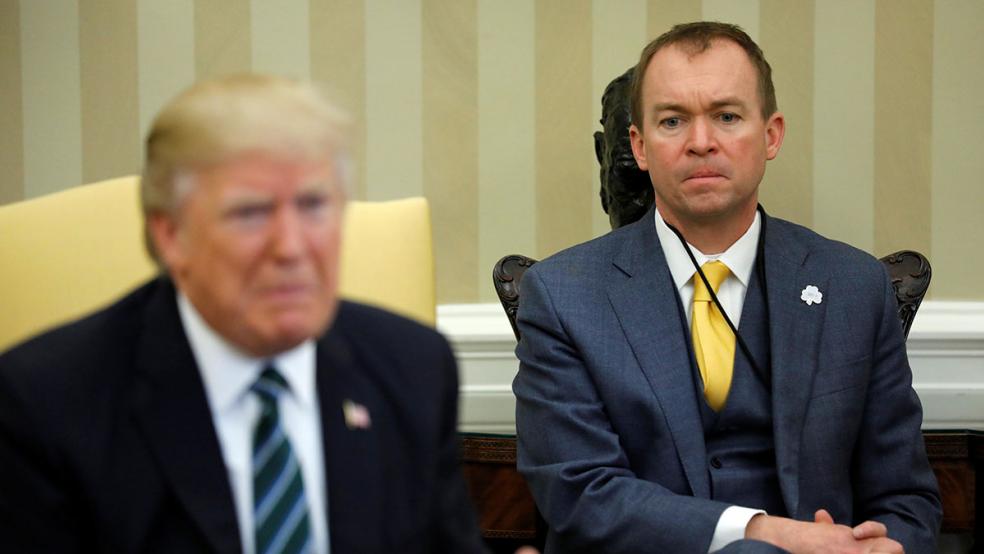The public is generally supportive of President Trump’s ambitions to build up the military, beginning with a $54 billion increase in defense spending next year. By a margin of 58 to 39 percent, voters say that increased military spending is a "good idea," according to a new Quinnipiac University poll released on Friday.
But voters strongly disagree with the way Trump is seeking to finance that buildup – with deep, offsetting cuts in practically every government department, agency and program, the poll found. They are especially troubled by the proposed deep cuts in funding for medical research, new roads and transportation, climate change research and the National Endowment for the Arts and the National Endowment for the Humanities.
Related: Trump’s ‘Hard Power’ Budget Gives Billions to Defense, Guts Domestic Programs
"It's a rousing yes for healing the vets and growing the military,” Tim Malloy, assistant director of the Quinnipiac University Poll, said in a statement. “But when it comes to cutting Public TV, the arts, after school programs and scientific research to improve the environment, it's a stern 'hands off' from voters.”
What’s more, nearly two thirds of those surveyed think starting to fund Trump’s plan to build a nearly 2,000-mile long wall along the southern border with Mexico to make good on one of his principal campaign promises is a “bad idea.”
Trump’s March 16 “America First” budget proposal calls on Congress to make the first down payments on the cost of building the wall to crack down on illegal border crossings into this country. That would begin with a relatively modest $1.5 billion appropriation this year and more than $2 billion next year -- a small fraction of the estimated $25 billion overall cost that Trump once said would be paid by the Mexican government.
The poll found 64 percent of voters interviewed said they thought it was a bad idea while 35 percent support Trump’s effort. The backing is far more intense among Republicans, who say by a margin of 74 percent to 24 percent that the wall should be funded.
Related: Trump Could Face His First Fiscal Crisis Over Raising the Debt Ceiling
Trump’s 53-page spending blueprint for fiscal 2018 calls for sharp increases in defense, homeland security and veterans’ health. The Department of Defense would receive a 10 percent increase in its budget, the Department of Homeland Security would see its budget rise by 6.8 percent and the Veteran Affairs Department would get a 6 percent increase.
In contrast, most other government agencies and programs were targeted for cuts. And agencies and departments that came in for tough criticism from Trump during the campaign were hardest hit.
The Environmental Protection Agency were hit by the steepest cut of 31 percent, followed by the State Department/USAID with a 29 percent cut and the Department of Agriculture with a 21 percent reduction. The National Institutes of Health (NIH), the nation’s premier scientific research program that provides grants for research in the U.S. and overseas, would be cut by 20 percent.
Related: The Five Biggest Winners and Losers in Trump’s Fiscal 2018 Budget
But when asked what they thought of many of the proposed cuts, here were the voters’ responses:
* 87% to 9% against cutting funding for medical research.
*84% to 13% against cutting funding for new road and transit projects.
*67% to 31% against cuts to scientific research on the environment and climate change.
*83% to 14% against cutting funding for after school and summer school programs.
*66% to 27% against eliminating the National Endowment for the Arts and the National Endowment for the Humanities.
*79% to 17% against eliminating the Low-Income Home Energy Assistance Program.
Trump’s spending plan for the coming fiscal year is focused almost exclusively on the third of the roughly $4 trillion annual federal budget that goes for discretionary programs and general government operations and is far from the final word. House and Senate Republican and Democratic leaders stressed that Trump’s draconian spending plan was merely an opening gambit.
Congress holds the government’s purse strings, those leaders noted, and lawmakers will have the final say.





